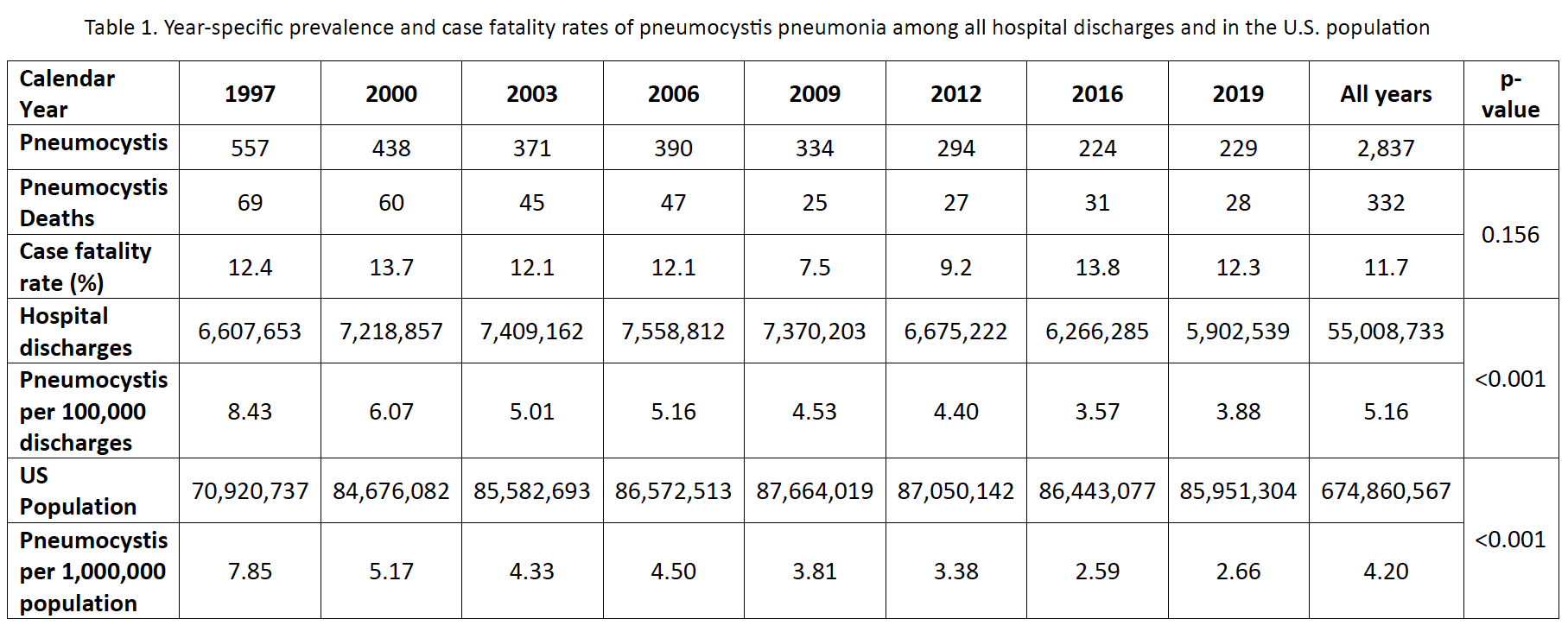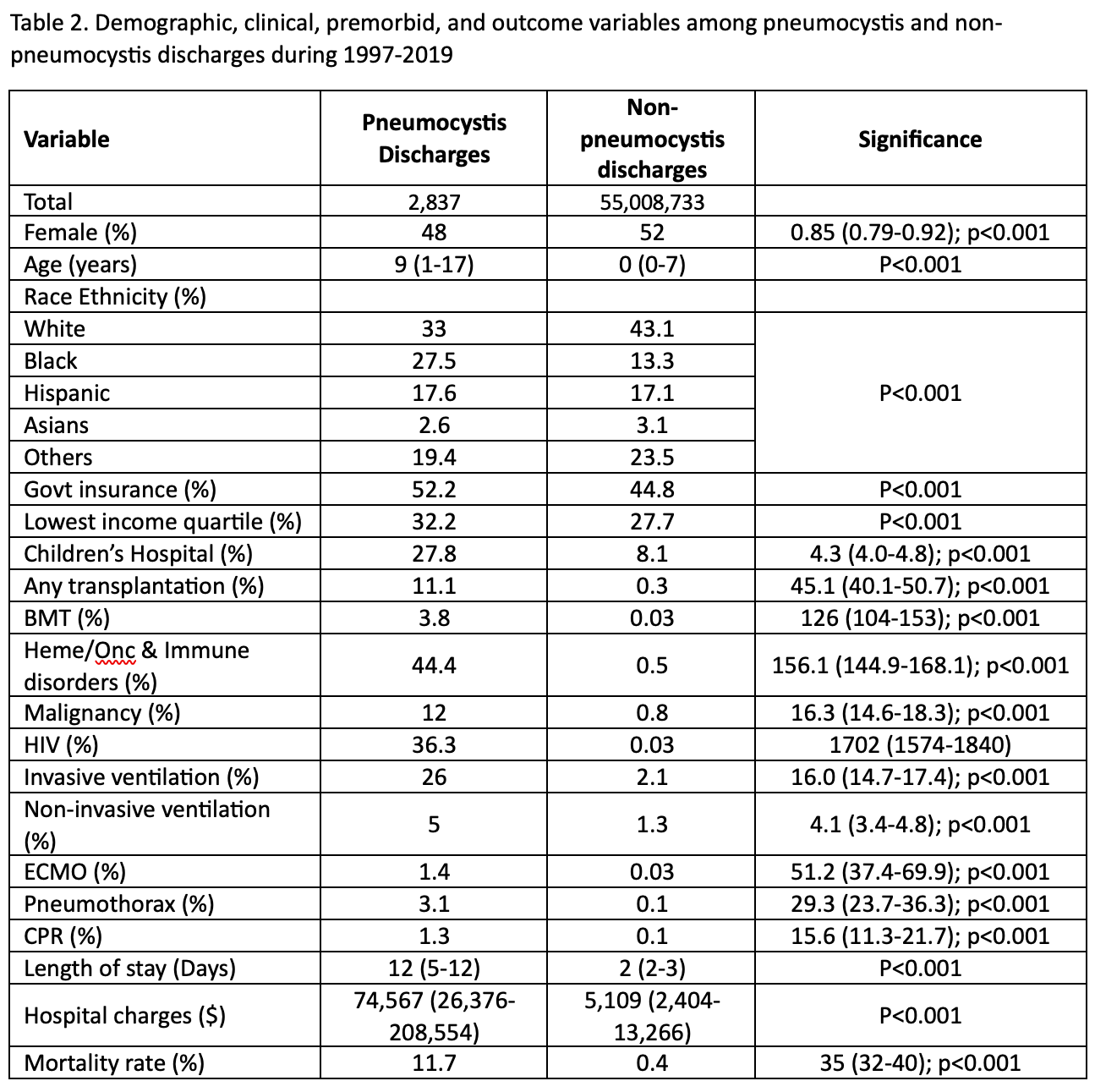Background: Pneumocystis pneumonia (PCP) is a life-threatening opportunistic infection that leads to severe pneumonia in immunocompromised hosts. This results in respiratory failure and hypoxemia. Its reported survival rate ranges from 20% to 50%. Despite its seriousness, there is limited research on the occurrence of PCP in children, likely due to its infrequency. Current national data and emerging trends in PCP among children remain unaddressed. The objective of this study was to describe the demographic and clinical characteristics as well as temporal trends of PCP pneumonia in the pediatric population using the Healthcare Cost and Utilization Project’s (HCUP) Kids Inpatient Database (KID).
Methods: This retrospective cross-sectional study analyzed data from the KID database for the years 1997-2019. KID is a national pediatric discharge data published every 3 years by the HCUP. The KID was filtered using ICD-9 and ICD-10 codes specific to PCP pneumonia and included children under 20 years or younger. Descriptive data were presented in frequencies for categorical variables and medians (IQR) for continuous variables with odds ratios and 95% confidence intervals for binary analyses. Total discharges in the KID database and the mid-year age-specific U.S. population were used for PCP prevalence calculation. Categorical and continuous variables were compared between pneumocystis cases vs non-pneumocystis using Chi-square and Mann-Whitney U tests, respectively. The Chi-square for linear trend (Extended Mantel-Haenszel) test was used for trend analyses. Hospital charges were inflation-adjusted for 2019. IRB determined this as an exempt study.
Results: There was a total of 2,837 hospitalized cases of PCP pneumonia out of over 55 million discharges. The prevalence of PCP pneumonia in children was 5.2 cases per 100,000 hospital discharges and 4.2 cases per million children in the US during the study period. The case fatality rate was 11.7%. There was a decrease in trend in the prevalence (p< 0.001), more substantially during later years in the study period, but the case fatality rate remained unchanged (Table 1). The demographic, clinical, premorbid conditions, resource utilization, and outcome variables of children with PCP pneumonia and non-PCP cases are presented in Table 2. Hem/onc and immune disorders were the most common underlying conditions associated with PCP infection and HIV was the second most common. The highest prevalence of PCP infection during the study period was in children from 10-14 years old with a prevalence of 13.5 cases per 100,000 discharges, followed by children from 5-9 years old, with a prevalence of 13.1 cases per 100,000 discharges. The infection was the least frequent in neonates with a prevalence of 0.1 cases per 100,000 discharges. During the study period, the prevalence of HIV in hospitalized children decreased from 98 cases per 100,000 discharges in 1997 to 8 cases per 100,000 in 2019 (p< 0.001).
Conclusions: This study provides the recent temporal trends of hospitalization due to PCP in children in the United States. PCP is uncommon in children but is associated with a high mortality rate. The prevalence of PCP pneumonia in the United States has decreased but the mortality rate is unchanged from 1997-2019. The decreased PCP prevalence may be due to a decrease in HIV cases. Improved compliance with PCP prophylaxis in immunocompromised children may have contributed to the decrease in the PCP prevalence that needs to be further evaluated.


